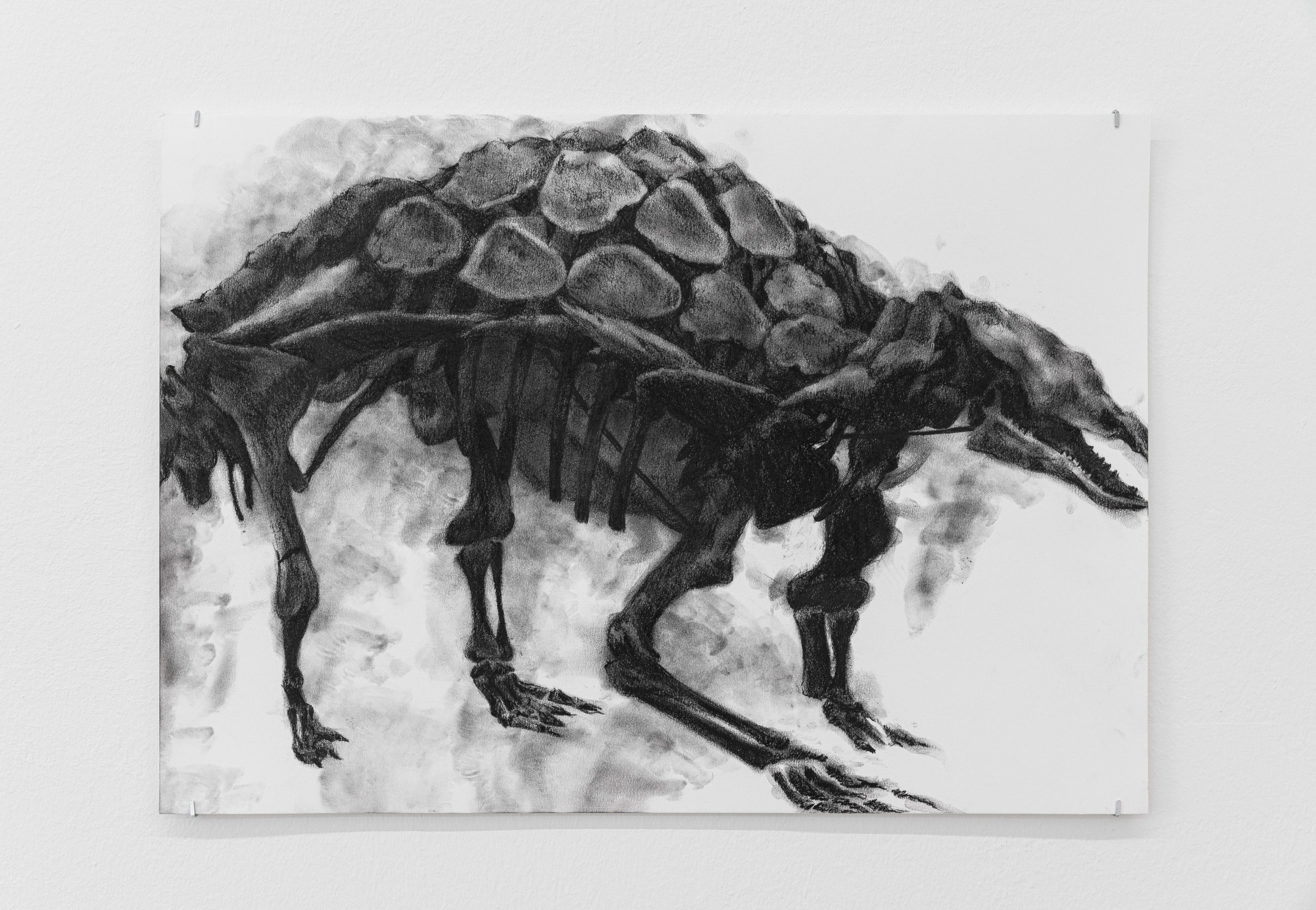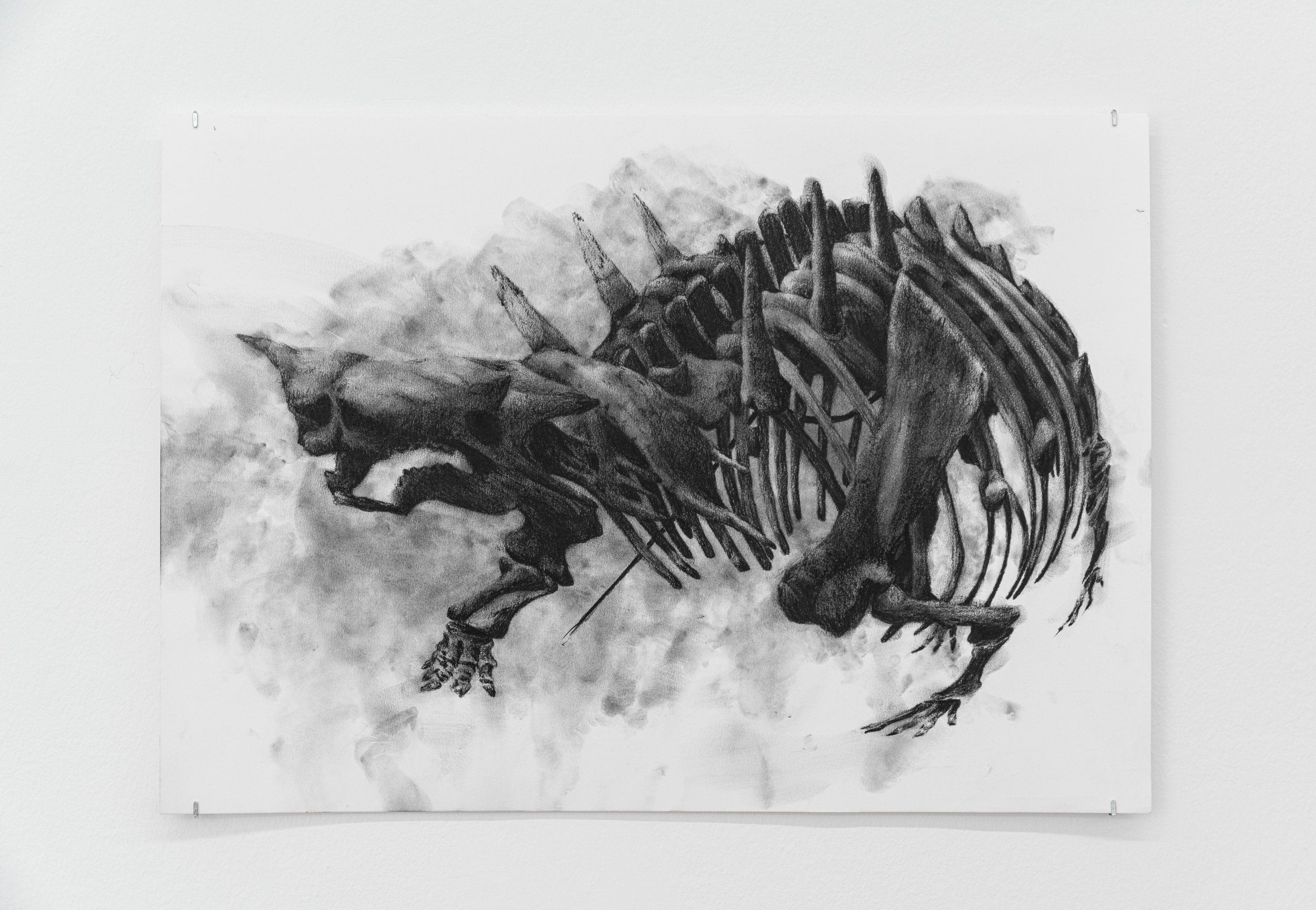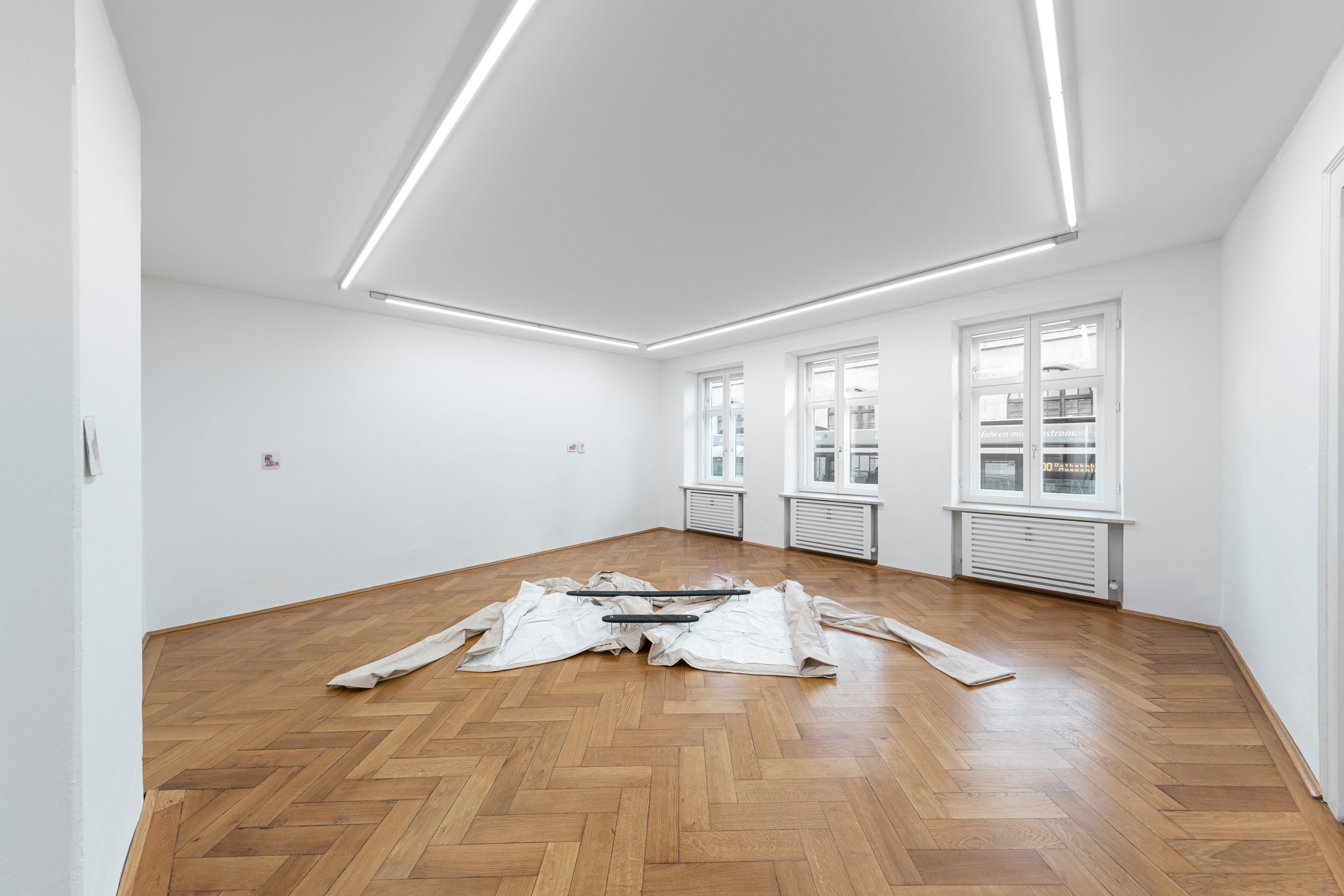Frances Drayson

“I’m deliberately engaging in faulty methodologies. Metaphor, analogy or ciphers appear to conflate different bodies, time periods, processes or emotional states.”
Interview by Charlie Mills
Could you tell us a bit about yourself and your background? Where did you study?
I was born in London and studied at the Slade (BA Fine Art 2010) and RA Schools (Fine Art PGDip 2019). Since then I’ve been teaching at some London art schools and working in a studio shared with friends. I have dual citizenship- half British, half German- and go to Germany when I can.
You recently finished a solo exhibition in Munich at Galerie Britta Rettberg. The show was called Natural History and included new and existing works in a fascinating display of sculpture, drawing and text. Can you tell us about the different works that were included in the exhibition and the key ideas behind the show?
I had the chance to reconfigure and tease out different aspects in older works through combination with new works. I approached the four rooms of the gallery as distinct chapters, with a text piece in the corridor that would connect them (Designations, 2021). The first room combined a pair of oversized biker jackets on the floor (Honey Ant, 2021) with postcard-size collages dotted around the walls at varying heights. The second room had a wall work wrapping around it (Plot of Land III, 2021), with the spacing between panels expanding and contracting from left to right. The third had a reconfiguration of a large floor piece (If you cannot keep a rhythm how will you know when you are next fed? [for Dieter], 2019) that bent itself around the space. The fourth room had a series of drawings circled around a cluster of small bronze casts (Maintenance 01, 02, 03, all 2017). All the works engage in- or complicate- attempts to make sense: of events, time periods, vast landmasses, physical material, familial relationships.
Throughout this show, the desire for memory is paramount. Both its beauty and fallibility are interlaced through varying tempos and rhythms that make up our organic and technological world— whether this concerns the content of family mementos, geological discoveries or assertions of what in fact constitutes “natural” history. You often liken this desire for memory or understanding to that of detective work — can you tell us what you mean by that?
The homicide detective is a figure in novels, tv-series and films that interests me. They’re often dysfunctional, obsessed with making sense of other people’s lives and deaths. The obsession is at the expense of their own ability to form or maintain normative relationships, and they are frequently shown abusing alcohol or drugs to cope with the pressure that’s partly self-imposed. Making sense – in any number of ways- is both necessary for engagement beyond the abstract and is itself a process of abstraction. For example, mapping territories that are changing within our frame of perception or slower due to a huge range of factors. The detective often makes ‘genius’ associative leaps to come to their conclusion. They are centered in their cosmos of clues, weaving all the differences together and somewhat displacing the person/people who have died in the process. The detective’s endeavour is both commemorative, erasing and impossible. This combination felt close to my recent experiences of loss.
From left: Sandie, Jackie, Lucille, Pattie, Donna and Nancy, all 2021 and Maintenance 01, Maintenance 02 and Maintenance 03, all 2017. Installation view. Photo by Dirk Tacke
Lucille, 2021. Photo by Dirk Tacke
Sandie, 2021. Photo by Dirk Tacke
Plot of Land III, 2021. Photo by Dirk Tacke
Another recurring theme from the show, and in your work more generally, is the contestation of territories or identities. There are a number of ciphers for these questions evident in the show, from your Plot of Land series, in which sketches by your Oma of different geological eras are abstracted to a sequence of pure formal compositions, but also in your carbon stick drawings of dinosaur skeletons, with their respective names of Sandie, Jackie, Lucille, Pattie, Donna, and Nancy. In reference to these works, what is it that interests you about this dynamic of contestation?
It highlights mapping and categorisation as unstable techniques, and shifts focus to what or who they are contingent on. The nicknames given to fossils in public collections are affectionate and necessary as their catalogue numbers aren’t memorable. But to establish sexual dimorphism in a species (differences in bone size, proportion, density and so on) there needs to be a large sample group to work from. This isn’t the case with many dinosaur species, where only one or two have ever been discovered. So nicknames are also presumptive and proprietary. I think a lot about contexts where opacity and mutability are suppressed or rejected as a threat. In the work, I’m deliberately engaging in faulty methodologies. Metaphors, analogy or ciphers appear to conflate different bodies, time periods, processes or emotional states. I try to keep a tension between what’s being compared or what seems to be a simple vehicle for something else.
Multiplicity and repetition seem as though they are important concepts to you — both formally but also texturally, as a metaphor for the varying disorders that constitute the embedded processes of identity, politics and history: rotations, accelerations, wells, ruptures and loops. Why are you so interested in these motifs and how do you use them to express your ideas?
I use repetition in sculptures and sound works. I’ll often repeat forms, sounds and actions to the point of mutation or abstraction. My English grandparents had a dairy farm, and as a child, I saw the repetitive routines and the cycling of bodies through spaces. I am guessing this is partly where my interest comes from, and partly from an interest in song structures. Repetition can optimise production and provide consistency or can numb and obliterate. Mutations resulting from multiplication can be constructive surprises, metastatic disasters and everything in between. A few years ago I researched into antibiotic resistance after contracting a hospital superbug. I found out that some ethnobotanists are referring back to medieval ‘potion’ recipes for (new/old?) forms of antibiotics to replace those which are becoming redundant from over-prescription. I suppose ideally antibiotic formulations will be on constant rotation. I’m trying to hold the tension between pleasurable or positive associations with rhythms, patterns and cycles and their flip sides in my work.
Honey Ant, 2021. Installation view. Photo by Dirk Tacke
Like the others, only more so and Amateur detective, both 2021. Photo by Dirk Tacke
Either and After/Sun Dogs, Bold Tendencies 2021: Arcadia. Photo by Damien Griffiths
You were recently commissioned to make your first public sculpture by Bold Tendencies in London, as part of their 2021 programme on Arcadia. Can you tell us about the work and what were the ideas that inspired it?
I wanted to work with figural representation to express something around absence and loss. I began by looking through 16th Century imagery and stories for representations of illusions or the inexplicable – a trickster figure in German folklore and accounts of a UFO sighting in Nuremberg. Some historians think the UFOs in question were parhelia (mock suns that are caused by light refraction). I found some illustrations of parhelia in the Nuremberg chronicles as two partial faces flanking a whole one like decoys or facets of a single persona. Either and After/ Sun Dogs (2021) has two brass ‘decoy’ heads mounted on long steel spines and a third concrete ‘dead’ head installed slightly out of eyeline as you approach the garden. It’s usually spotted as you turn to leave. I knew I wanted to site the work in the Jarman garden – a recreation of a space elsewhere which has so much attached to it.
Is there anything new and exciting in the pipeline you would like to tell us about?
I’m going to be on a residency coordinated by Kunstverein Munich this summer. Three months is a big stretch of time for me to focus on my work, and I’m looking forward to it.
All images are courtesy of the artist
Date of publication: 18/02/22






